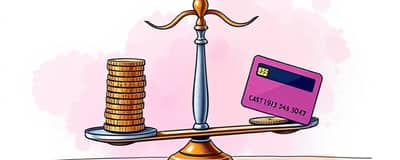In today’s dynamic financial landscape, personal loans have emerged as versatile tools that can unlock opportunities for homeowners, entrepreneurs, and families alike. When approached with knowledge and prudence, a personal loan can offer a strategic path toward debt relief, home improvements, or emergency funds without the unpredictability of high-interest credit cards.
By understanding how to compare offers, secure favorable terms, and deploy borrowed funds wisely, you can transform a simple loan into a catalyst for positive change. This guide distills current data, actionable strategies, and cautionary advice to help you maximize the financial advantages of your personal loan.
Understanding Current Market Trends
As of 2025, the average personal loan rate for a borrower with a 700 FICO score taking $5,000 over three years is 12.64%. Broadly, the average APR across all credit tiers and lenders sits at 20.78%, while top-tier borrowers can access rates as low as 5.99%.
Loan balances have grown: the average personal loan debt per borrower reached $11,631 in Q1 2025, and 24.6 million Americans now hold at least one personal loan—a 4.7% rise year-over-year. Flexible loan amounts range from $1,000 to $100,000, tailored to each borrower’s creditworthiness and need.
These figures illustrate that lower fixed interest rates compared to cards are available to prime borrowers, while subprime rates can exceed 100%, underscoring the importance of credit health.
Key Factors Affecting Your Loan Cost and Approval
- Credit Score Impact: The most critical determinant of your APR. Excellent scores (720+) unlock the best deals, whereas scores below 660 often face steep rates or outright denial.
- Loan Amount and Term: Larger loans with shorter terms typically carry lower APRs, though payments rise accordingly.
- Income and Debt-to-Income Ratio: A strong income relative to existing debts qualifies you for top-tier rates.
- Lender Type: Banks and credit unions often offer more competitive pricing than marketplace or online-only lenders, but shop around—some fintech platforms post attractive offers.
Strategies to Secure the Best Rates
- Pay Down Existing Debt: Lowering outstanding balances can boost your credit score and improve your eligibility.
- Opt for a Shorter Term: Three- to five-year loans usually come with lower APRs than seven-year options.
- Use Prequalification Tools on Aggregator Sites: Compare real offers without hard inquiries to find competitive rates.
- Consider a Co-signer: A financially strong cosigner can tip approval odds for fair-credit borrowers.
- Enroll in Autopay: Many lenders reward automatic payments with rate discounts, knocking off up to 0.5% APR.
By following these tactics—especially the use of prequalification tools on aggregator sites and timely payments—you place yourself in a position to access the most affordable credit.
How to Maximize Your Loan’s Utility
- Debt Consolidation: Roll high-interest credit card balances into a single loan at a lower rate. Calculate total savings accurately before borrowing to ensure meaningful financial relief.
- Home Improvements: Fund renovations that boost property value; prioritize high-ROI projects like kitchen upgrades or energy-efficient installations.
- Medical and Emergency Expenses: Manage unplanned bills without depleting savings, ensuring you maintain financial resilience.
- Budget Planning: Use the predictability of fixed monthly payments allow for easier budgeting to avoid late fees and credit hits.
- Avoid Unnecessary Spending: Borrow only what you need, and resist using loan proceeds for depreciating assets or luxury items.
Avoiding Common Pitfalls
Personal loans offer many advantages, but risks abound—particularly for borrowers with marginal credit. APRs above 20% can spiral out of control, and origination fees ranging from 1% to 9.99% reduce your net proceeds upfront.
Be vigilant: beware of predatory lender fees and hidden penalty structures. Late-payment charges and prepayment penalties can erode your savings. Should you default, expect lasting damage to your credit and potential collections actions.
Final Thoughts and Action Steps
Securing and using a personal loan responsibly demands research, preparation, and ongoing discipline. Start by obtaining your credit report, disputing inaccuracies, and establishing a realistic budget. Compare multiple offers side by side, factoring in APR, fees, term length, and repayment flexibility.
Empower your financial journey by leveraging calculate total savings accurately before borrowing—model scenarios in spreadsheets to map out costs and benefits. Once approved, set up autopay, adhere strictly to your repayment schedule, and track progress toward debt reduction goals.
By harnessing these best practices, you can transform a simple loan into a powerful tool for consolidating debt, improving your living space, addressing emergencies, and building a stronger credit profile. With careful planning and disciplined execution, your personal loan can be the springboard to a healthier, more secure financial future.














